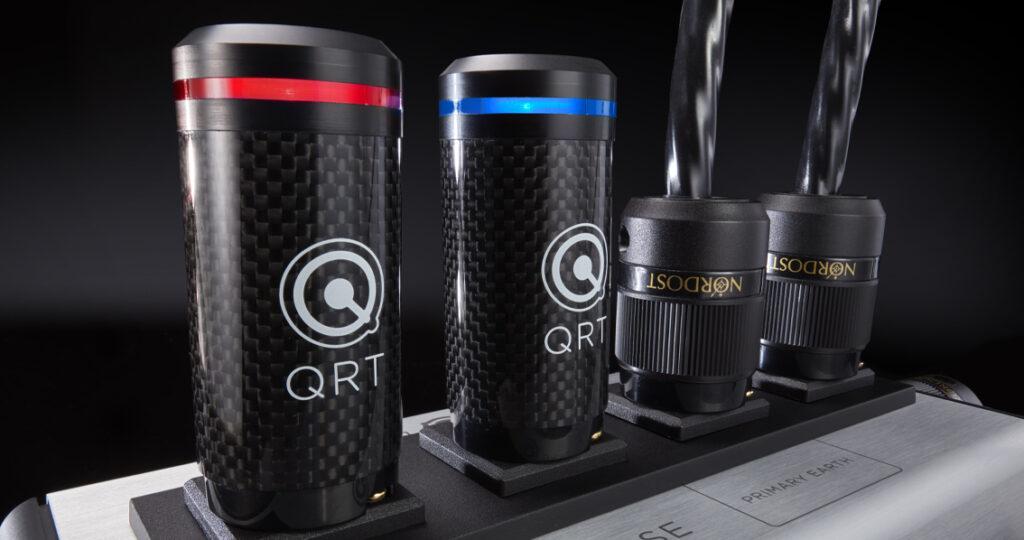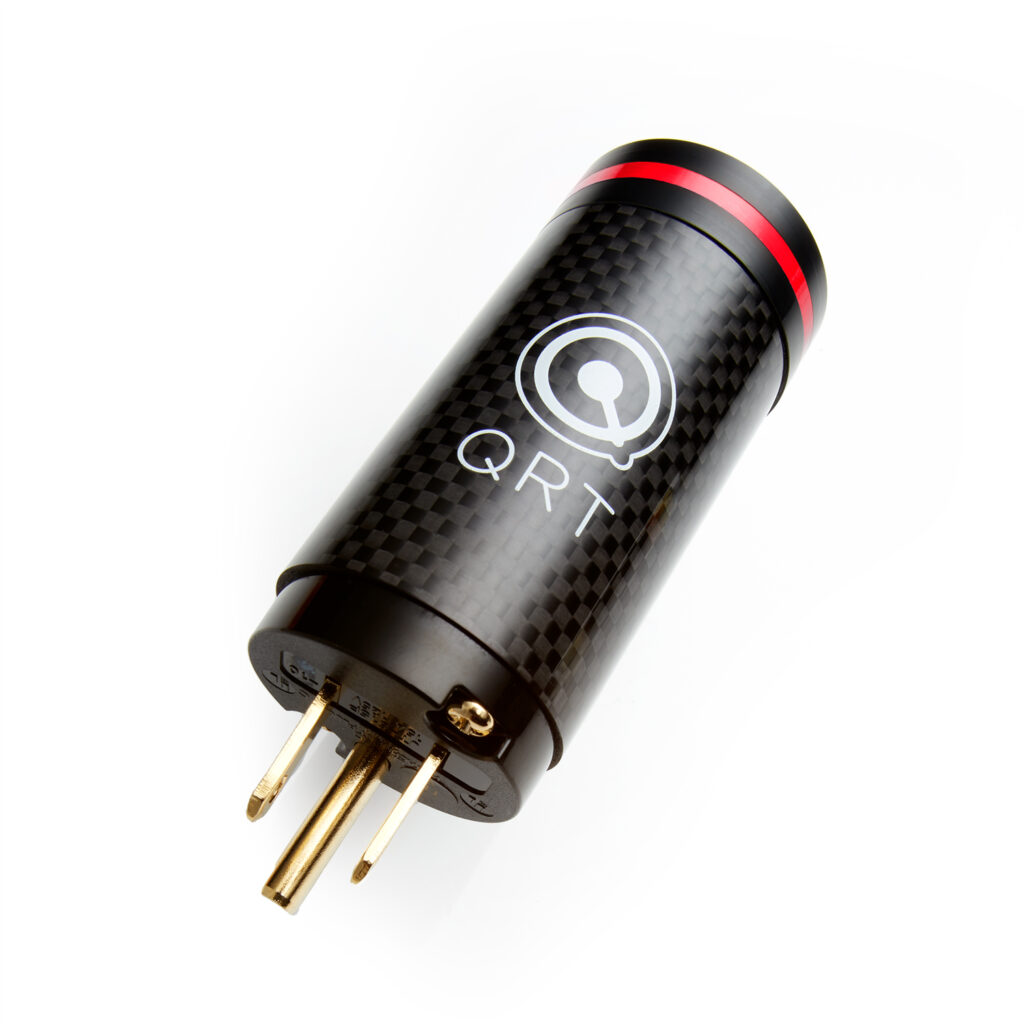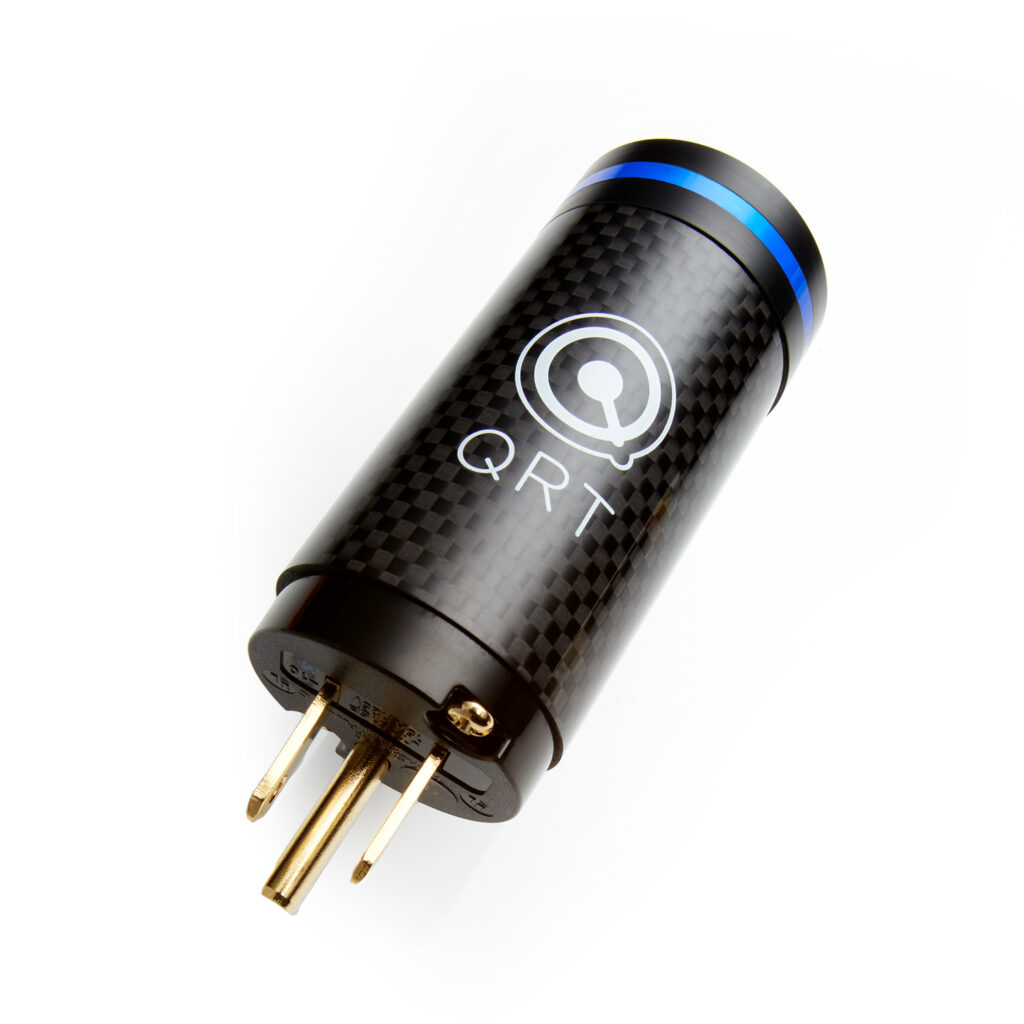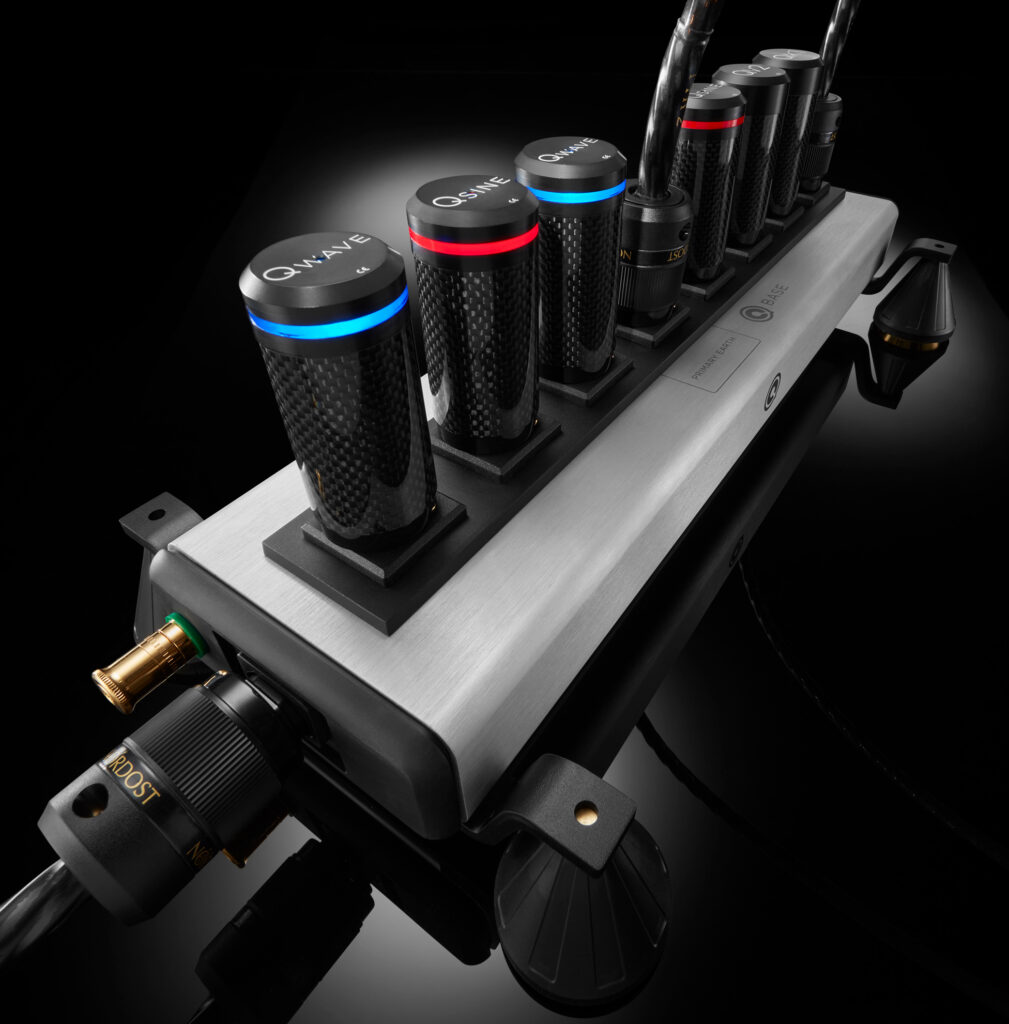
Nordost’s line of QRT Enhancers and Harmonizers, which originated with the QKOIL and QVIBE, is now expanding to include two fresh designs in the QSINE and QWAVE. Each plug-in provides a unique solution that helps to improve upon the poor quality AC that negatively affects the audio/video performance of two-channel and home entertainment systems.
The QSINE AC Enhancer and QWAVE AC Line Harmonizer are designed to be used alongside the QKOIL AC Enhancer and QVIBE AC Line Harmonizer. While each of these plug-ins has a unique focus, they all complement each other as a modular set of AC products. As with the QKOIL and QVIBE, both the QSINE and QWAVE can be used as “stand-alone” products, but their benefits are cumulative and are best enjoyed when integrated into a full suite of QRT products. To implement the QSINE and QWAVE, simply plug each device into any spare socket that connects to the AC line of your sound system.
Learn more about these two exciting new products:
QSINE – AC ENHANCER

The QSINE enhances the AC signal in a sound system by introducing a specific frequency field onto the circuit path. This frequency field indirectly reshapes the sine wave, which, in turn, lowers the effects of EMI noise embedded into the AC power, positively impacting the listener’s perception of the musical signal. Introducing the QSINE into your sound system brings about several distinct benefits
- A lowered perceived noise
- An increase in the clarity, detail, and pacing of musical reproduction
- A reduction of EMI on the AC line
- Greater musicality and improved tonal balance
QWAVE – AC LINE HARMONIZER

The QWAVE manipulates the sine wave by introducing a precise range of pulsed frequencies onto the AC line, clocked from the original 50 or 60 Hz waveform. Through this manipulation, the QWAVE is able to better control the harmonics and overtones attributed to many improvements, not least of which is the enhanced realism of both the musical and visual aspects of performance. As a result of integrating the QWAVE into your sound system, you can expect several noticeable results
- A lowered noise floor
- Increased imagery and dimensionality
- An enhanced presence of the sound stage
- A deeper, more dimensional, and vibrant picture in AV systems
Like the QKOIL and QVIBE, the QSINE and QWAVE are housed in a mechanically tuned, carbon-fiber body and equipped with either a US (NEMA), EU (Schuko), or AUS connector. (EU to UK adapters are available as needed)


Hello, what QSINE/ QWAVE ratio is recommended?
The QSINE/QWAVE can be used on a 1:1 ration, however everything is system dependent, so it is hard to make a fixed rule for every situation and system
Love the overall quality and the effect of the Qk1’s & Qv2’s plugged in a QB8 MKII feeding my pair of Pass Labs X600 monoblock power amplifiers, can’t wait to add some of the new QSINE & QWAVE QRT devices to the family!
The QB Ref –excited to learn more about it. From what I can garner as to price tag what would the rational be for not jsut adding another QB MKlll and the accompanying QRT plug-ins at a far lesser cost than the projected 17K?
Hello
I’m using the audioquest Niagara power conditioner.
Where should I plug the qwave.
In the spare
wall outlet powering the Niagara. Or in the spare outlets in the Niagara itself?
Thanks
You should place your QWAVE in any spare outlets in the Niagara. If you plug the QWAVE into the wall, before the Niagara the conditioning effects of the device will cancel the effects of the QWAVE.
What is the different of QK1/QKoil and QV2/QVibe ?
The QWAVE can be thought of as an upgrade to the QVIBE whereas the QSINE is completely different from the other QRT Plug-ins, including the QKOIL.
How to determine to choose QK1/QKOIL and QSINE ?
Is QSINE passive or active component ?
Both the QKOIL and QSINE are passive devices. We suggest getting a demo at your local Nordost dealer and maybe even take them home for a home demo so that you can hear the devices in your own system.
One set includes 01 Q Wave and 01 Q Sine. If I have 01 Integrated Amplifier and 01 Streamer, so how many set I should use ?
There is not hard fast number how many QRT Plug-ins you should use, especially because some of the results are system dependent. However, as a rule, we do recommend QWAVES to be used in pairs, when possible.